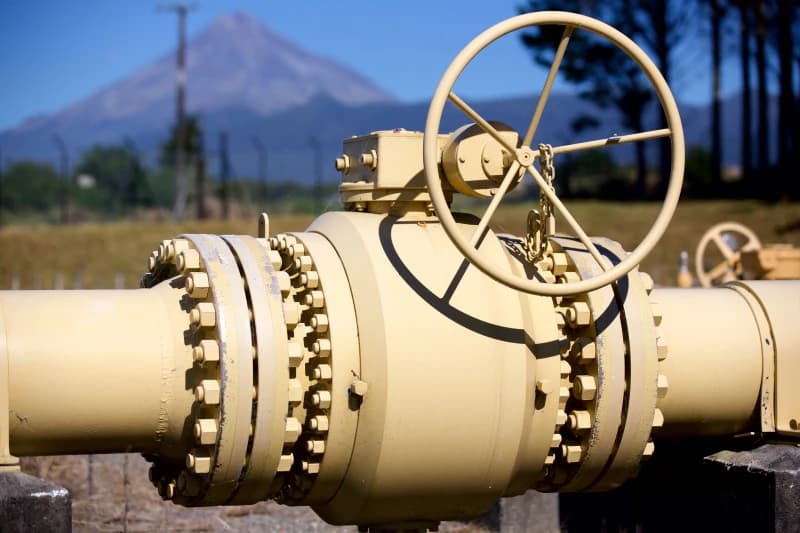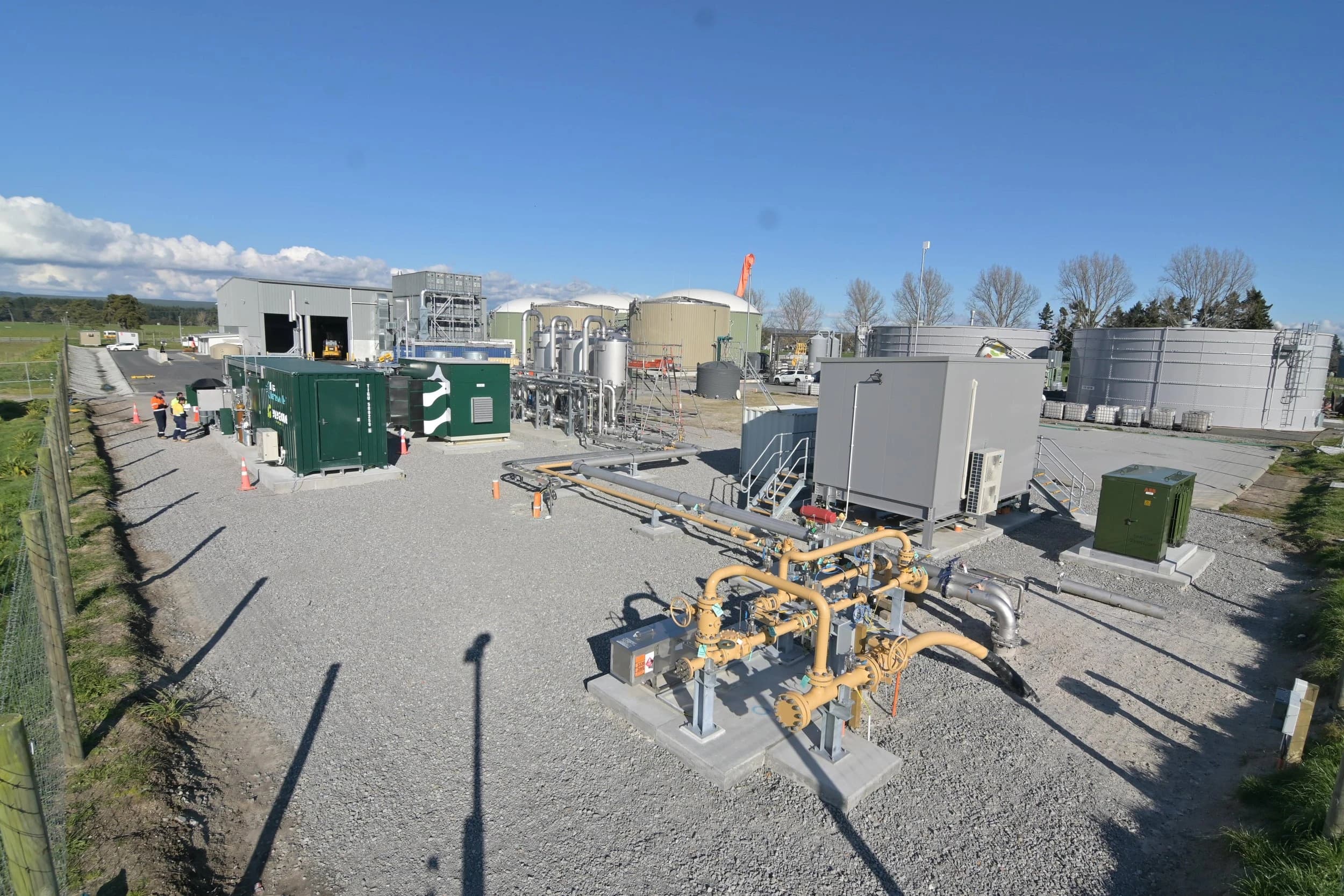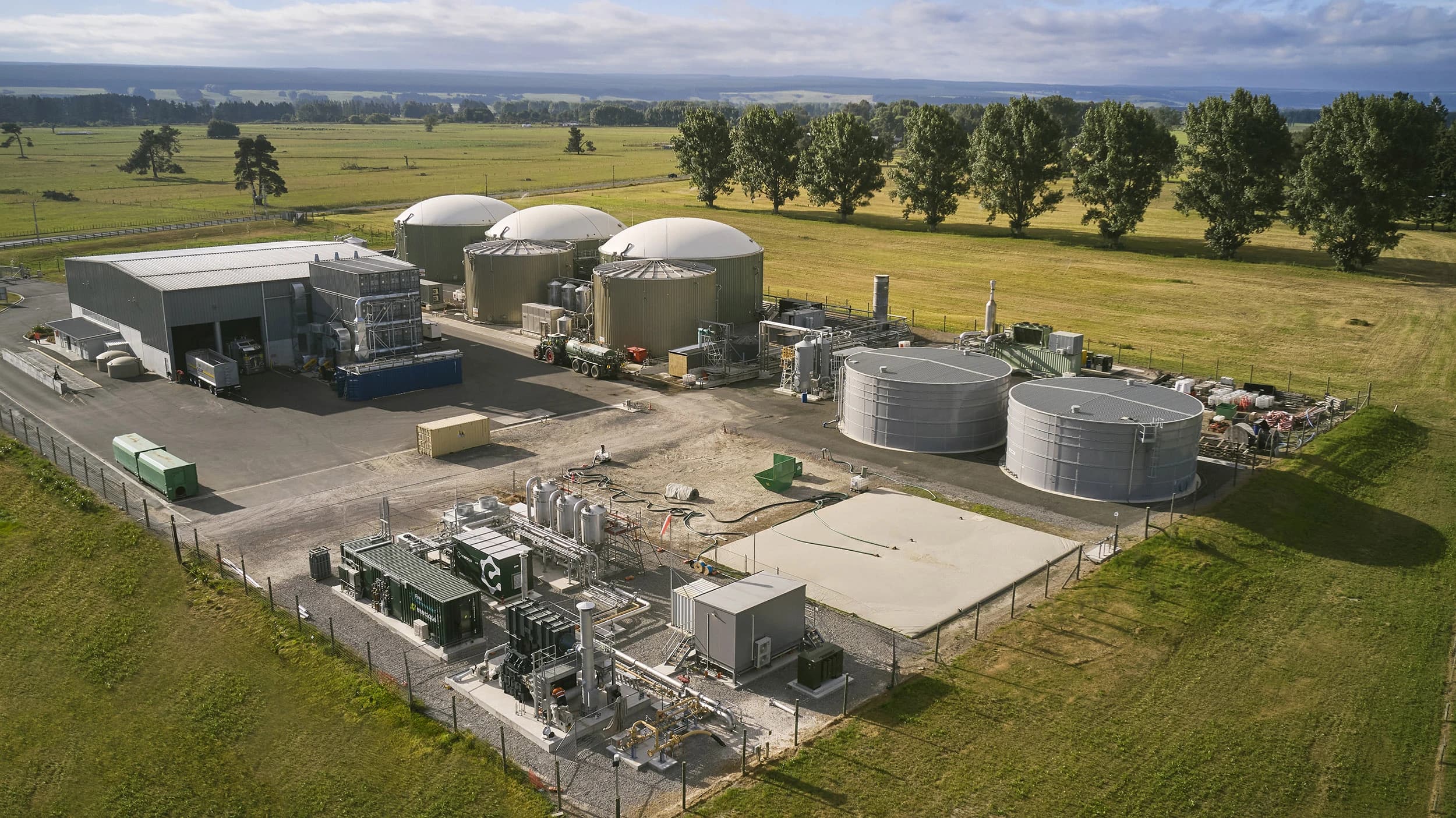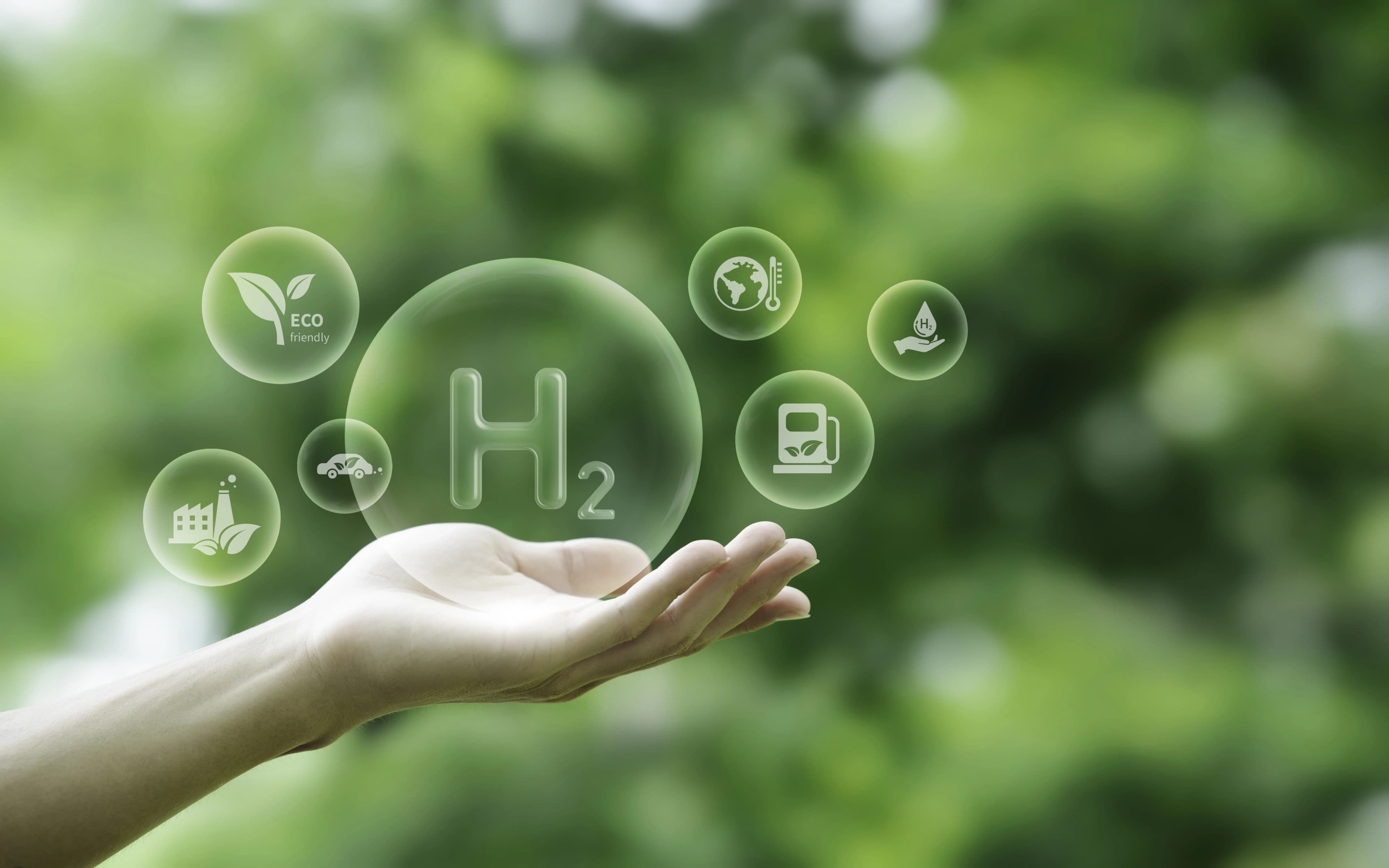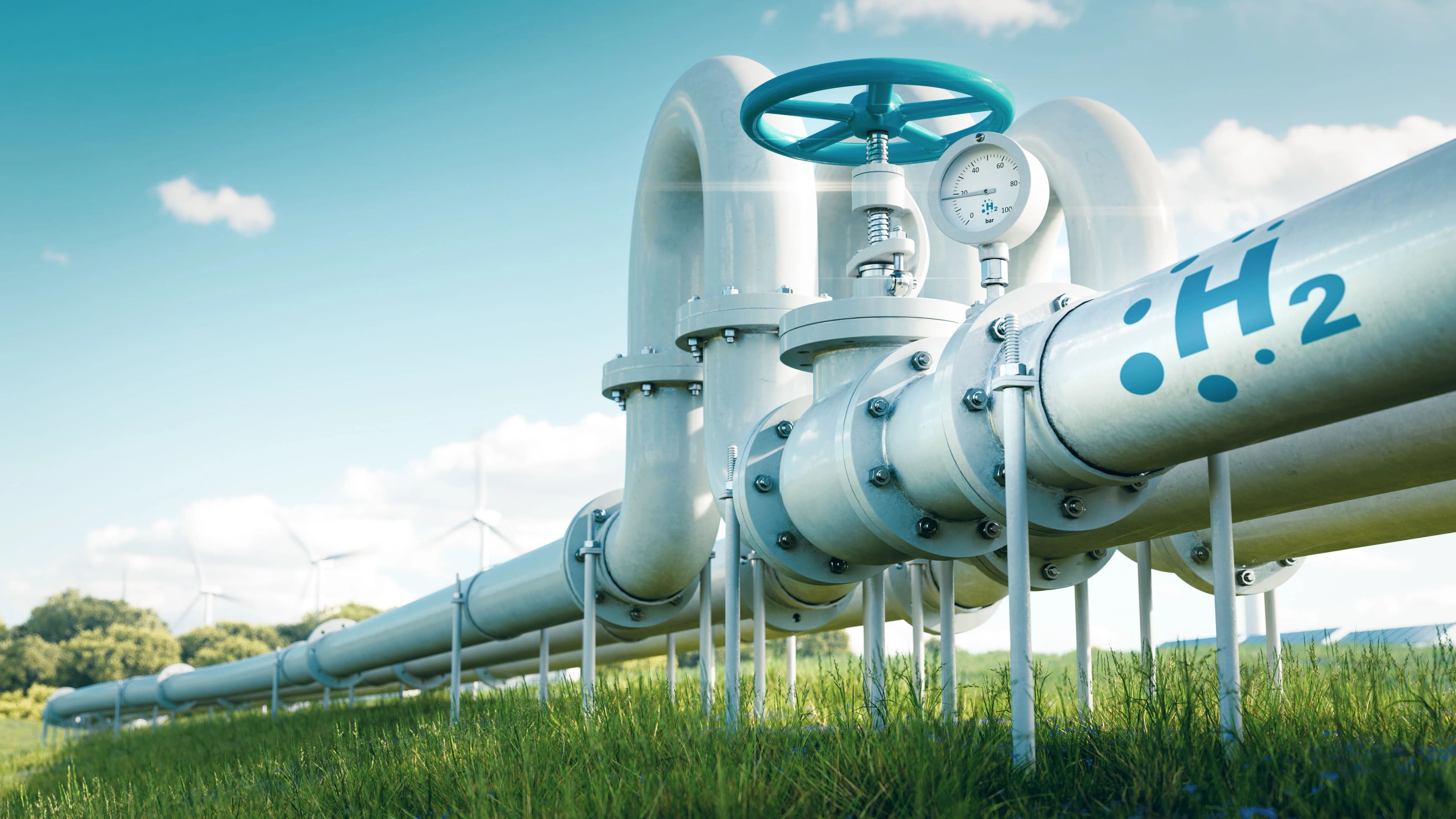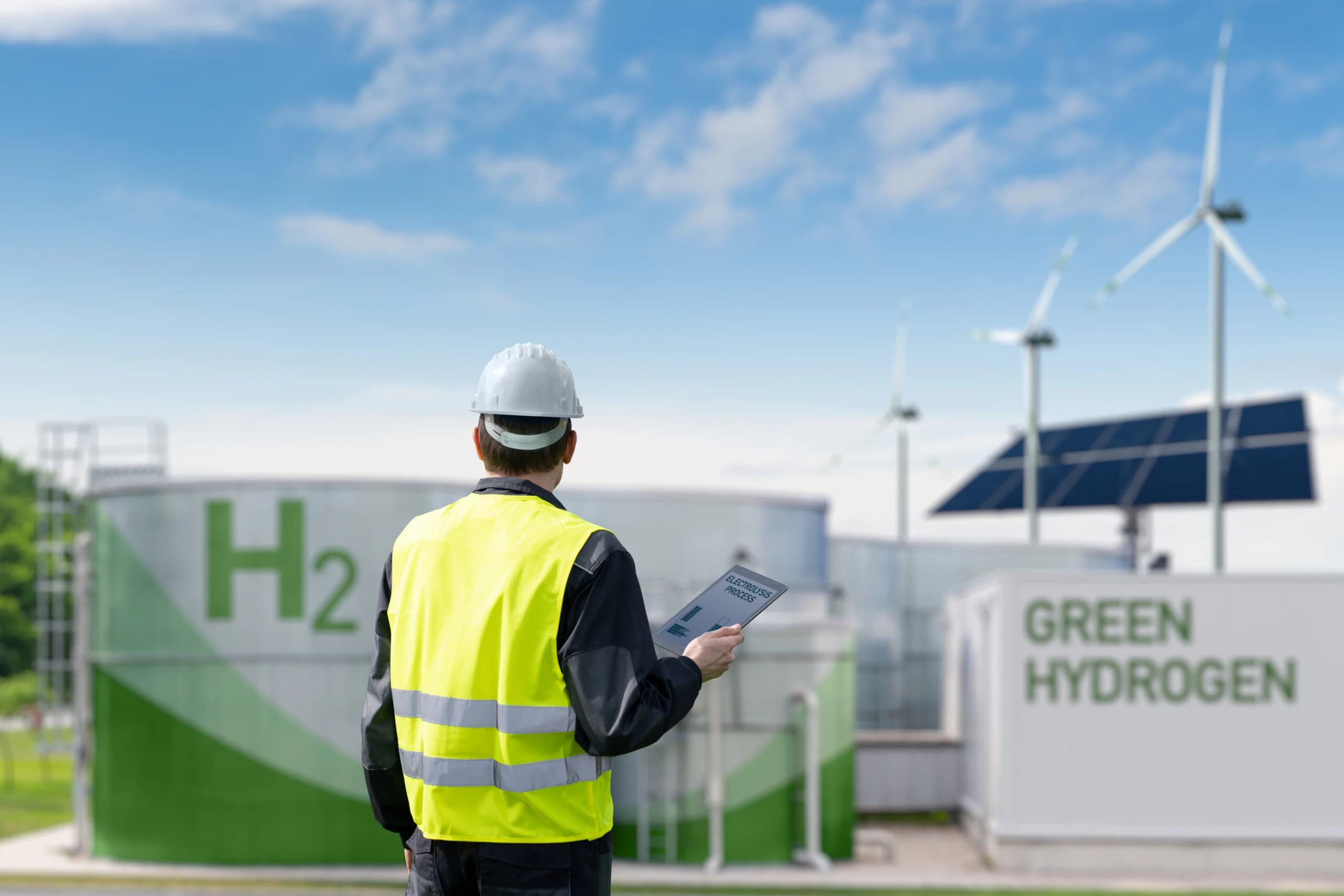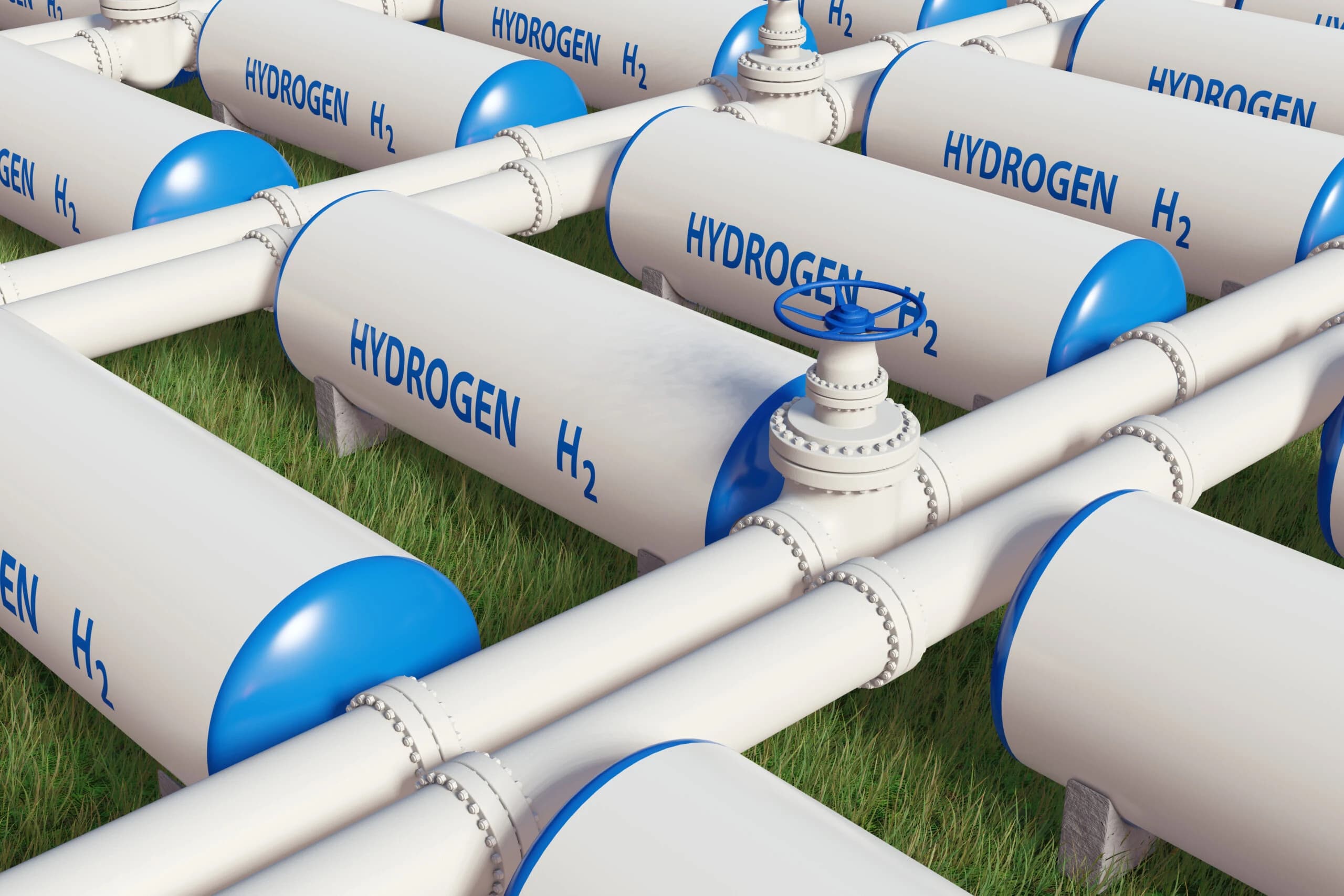As the country decarbonises and moves towards a net zero carbon future, natural gas will continue to play an important role while we change over to sources of renewable energy. One of these will be renewable gas. Which is what the Te Horo hydrogen blending pilot is all about. Keep scrolling for everything you need to know about this New Zealand-first project.
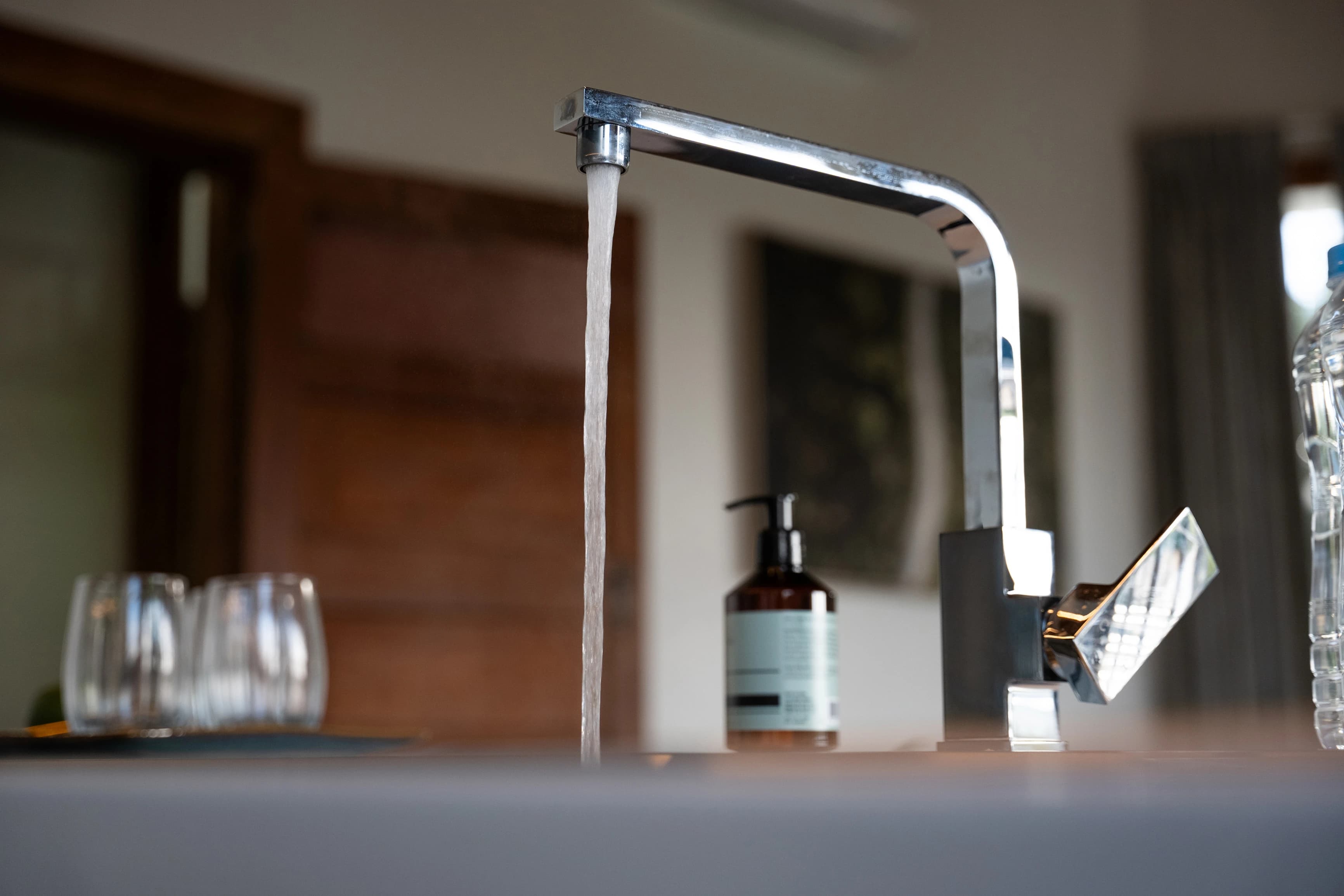
The Te Horo hydrogen blending pilot
New Zealand’s first hydrogen blending pilot
Over 16 weeks from June to October 2025, fourteen pioneering households in Te Horo, on the Kāpiti Coast, received a gas blend starting at 3.5% hydrogen up to 12% by volume, (which translates to 3% energy delivered), through the existing gas distribution network.
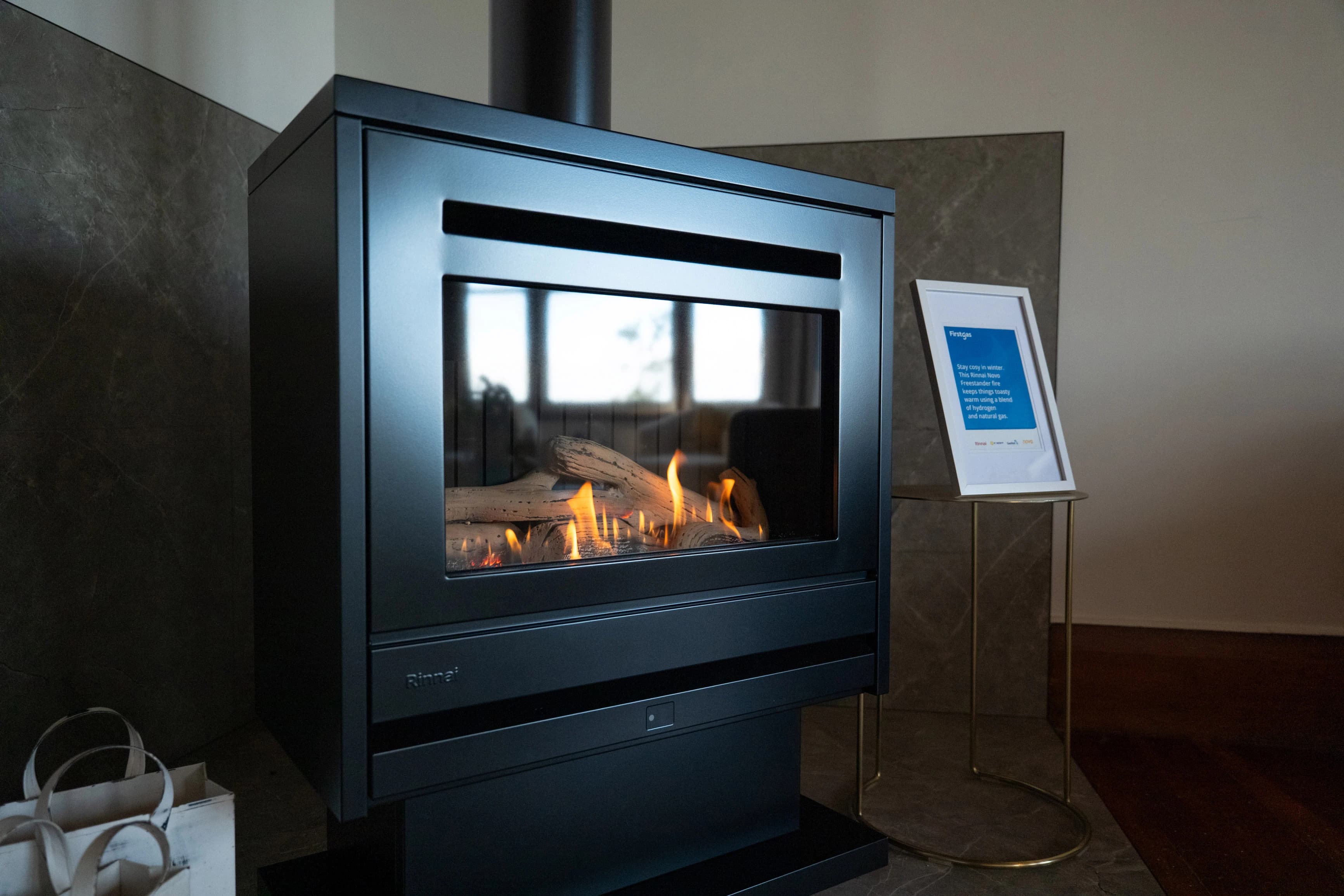
We’ve always been a country of pioneers, and this was another great example
Firstgas spent over five years planning the hydrogen trial to ensure it could be delivered safely, with close monitoring throughout. Because introducing blended gas into homes is new under the Gas Regulations 2010, Firstgas applied for two regulatory exemptions from WorkSafe to allow the pilot to proceed.
On 1 October, Standards New Zealand updated the national standard (NZS 5442:2025) to include guidance for blending up to 10% hydrogen into the local distribution network, supporting New Zealand’s energy transition.
Te Horo was selected for the pilot due to its small and accessible location and pipeline compatibility. Our team worked with 14 pioneering households who received the blended gas in their homes.
The beauty of blending a small percentage of hydrogen with natural gas is that gas appliances operate as they usually do, which meant that those households participating in the pilot could still enjoy all the normal benefits associated with their standard natural gas supply.
More than five years of preparation and planning went into ensuring the pilot could be delivered successfully, with close monitoring at every stage. The project team also worked closely with WorkSafe New Zealand’s Energy Safety team throughout this time.

Hydrogen blending is already happening overseas.
A huge amount of research is underway in the UK and Australia and networks are already successfully piloting blends of up to 20% hydrogen.
Five years’ worth of hard work went into planning this pilot and we worked closely on all aspects of the pilot with WorkSafe NZ (who is responsible for overseeing energy safety in New Zealand, including gas networks) and who provided two regulatory exemptions so the pilot could go ahead.
How it worked
Hydrogen blending equipment was installed and connected to the Firstgas distribution pipeline. We didn't have to make any additional modifications to the pipeline, and we constantly monitored the site and the participants homes to ensure the pipeline network and gas appliances were performing well during the pilot.
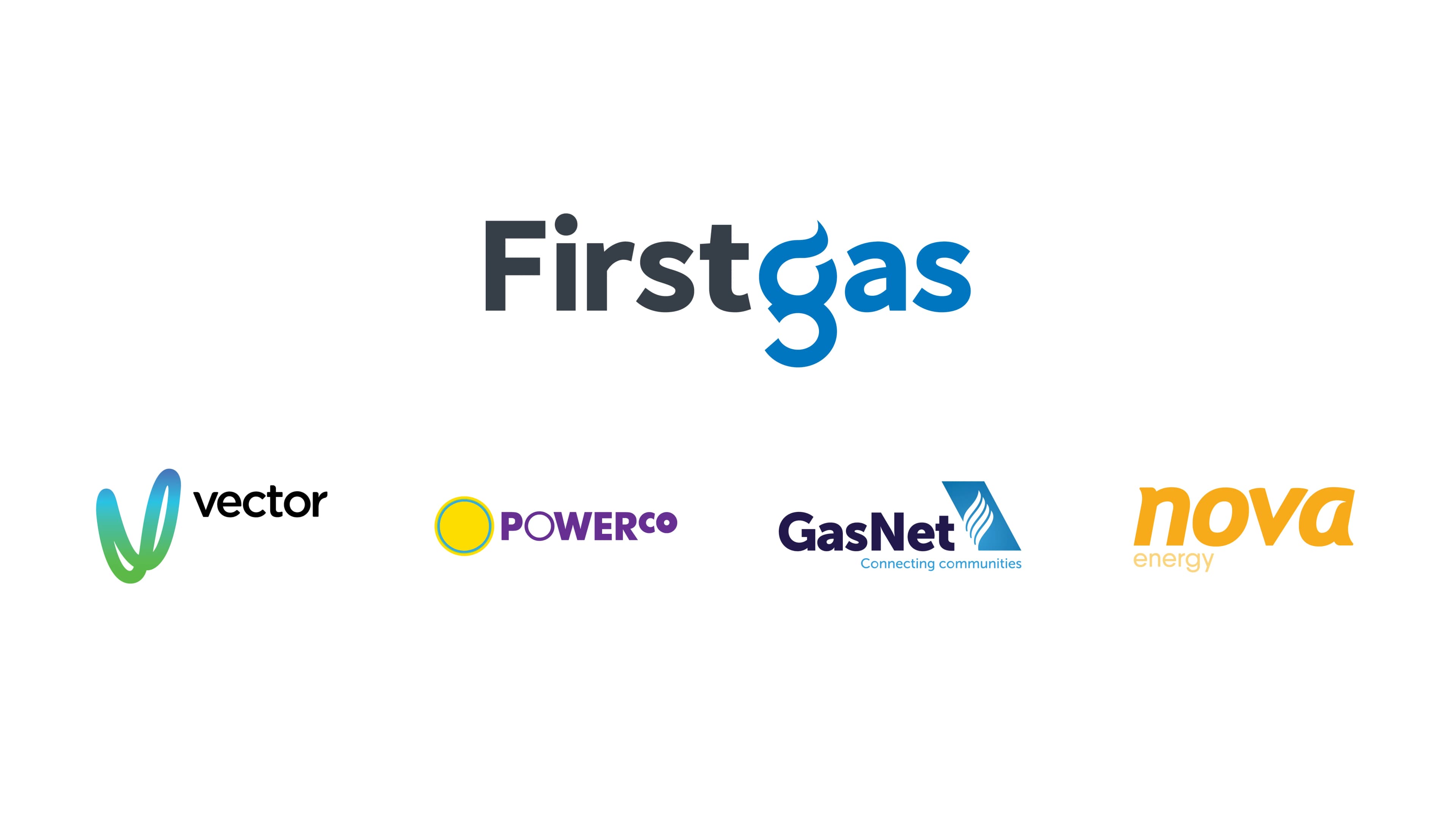
It took all of us!
The gas sector is working together to progress New Zealand’s decarbonisation goals and the future success of renewable gas. Firstgas worked closely with other natural gas distribution businesses including Vector, Powerco, GasNet and Nova Energy, along with energy retailers to deliver this New Zealand-first project.
We also helped fund earthquake strengthening of the Te Horo Community Hall as a thank you to this energy pioneering community!
Frequently asked questions
The is New Zealand’s first pilot that blended hydrogen into the natural gas network. Fourteen households in Te Horo, on the Kāpiti Coast, received the blended gas starting at 3.5% hydrogen up to 12% by volume, (which translates to 3% energy delivered), through the existing gas distribution network. Our energy future will be shaped by a mix of options, and this work helps us understand the option of hydrogen blending and demonstrates the feasibility of using New Zealand’s existing gas infrastructure to transport hydrogen.
Reaching a 10% and then 12% blend demonstrates that our existing distribution gas pipeline network can safely transport a small blend of hydrogen, with no modifications to the network or the participating homes’ appliances required. It’s an important step in gathering the technical evidence, capability and confidence needed to make more informed energy decisions in the future.
While hydrogen is currently more expensive to produce than natural gas, we hope that costs will fall as global production scales and technology advances. This is why pilots like this are important. By proving the infrastructure, safety case and technical feasibility, we’re working to get New Zealand ready to take advantage of hydrogen if it becomes more available and affordable, as we’ve seen happen with other technologies, such as solar.
We’re not signalling a mass rollout of hydrogen for residential use. The display home in Te Horo shows what’s technically possible with gas appliances. But the focus is on proving the network and safety case so that hydrogen can be an option where it makes sense, particularly in hard-to-electrify sectors.
Hydrogen is recognised internationally as a potentially renewable gas option that can be stored and transported at large scale. This could make it an ideal complement to solar and wind generation and a valuable tool for helping hard-to-electrify sectors, such as high-heat industries, heavy transport and those already using hydrogen as a feedstock, to decarbonise.
Renewable hydrogen is currently more expensive than natural gas, just as early solar, wind, and battery technologies were. Costs are falling overseas as production scales up. This pilot ensures that when hydrogen becomes more cost-competitive we are informed and able to respond if necessary.
Electrification will be a big part of the energy future, but some sectors can’t run on electricity alone. High-heat industries, heavy transport, and existing hydrogen feedstock users need other options. Hydrogen could provide a viable low-carbon solution for those sectors.
Hydrogen blending is already happening in countries like the UK, US, Canada, Japan, and Australia. For example, in Markham, Ontario, Enbridge blends up to 5% hydrogen into its network serving over 3,600 customers. New Zealand is now taking its first steps through this pilot, backed by industry collaboration and regulatory oversight.
Clarus is one of New Zealand’s largest energy groups, with brands that touch many parts of the energy supply chain – from energy transmission and distribution to retail supply and even storage.
Firstgas connects over 60,000 homes and businesses with natural gas through our gas distribution and high-pressure transmission systems, supporting our country’s economy.
Blending renewable hydrogen and natural gas is part of our future fuels strategy to help the country meet its climate action goals. So we’ve been working with some of New Zealand’s natural gas distribution businesses (Vector, Powerco, GasNet and Nova Energy) and energy retailers with active customers on the Te Horo network to explore the potential introduction and blending of a small amount of hydrogen into an existing pipeline.
In 2021 Firstgas released study findings confirming that gas pipeline networks in New Zealand could carry up to 20% hydrogen by 2035, with a move to 100% hydrogen by 2050. We were able to test these findings with New Zealand’s first hydrogen blend pilot in 2025.
- Scalable and dependable
- Low carbon - can be made cleanly using just water and renewable electricity
- Ideal complement to solar and wind electricity generation
- Storable and transportable at large scale
In the future hydrogen in pipelines could provide a low carbon option, particularly for businesses and industry.
Hydrogen could help a range of key industries such as steel, glass and concrete production as well as heavy transport, whose path to decarbonisation would otherwise be very difficult. For the energy sector it represents an additional source of clean energy to displace emissions and meet our net zero targets by 2050.
Hydrogen is being blended into the natural gas pipeline incrementally, starting at 3.5% and moving up to a maximum of 15% near the end of the pilot. The beauty of blending a small percentage of hydrogen with natural gas is that gas appliances operate as they usually do, meaning people can still enjoy all the normal benefits associated with their standard natural gas supply.
Blending equipment has been installed and contained within the current delivery point enclosure on Te Horo Beach Road. No additional modifications to the distribution network have been necessary, and detailed monitoring and verification procedures are in place to ensure network performance during the pilot.
The volumes of natural gas and hydrogen through the station will be metered allowing accurate dosing of hydrogen to be achieved. The final composition of the blended gas will be measured and controlled by gas chromatograph to ensure all requirements of the pilot are met.
Te Horo was selected due to its small and accessible location and pipeline compatibility. We worked with 14 local households who received the blended gas in their home appliances for the duration of the 16 week pilot.
Safety is our highest priority. Five years’ worth of hard work went into planning the pilot. We followed this approach:
- Coordinated closely with WorkSafe NZ (which is responsible for overseeing energy safety in New Zealand, including for gas networks).
- Adapted best practice from successful hydrogen-blend pilot projects in existing gas networks overseas.
- Extensive and detailed technical due diligence on our network assets and on the individual consumer appliances involved in the pilot.
- Transparent and detailed engagement with WorkSafe, expert consultants, appliance manufacturers and independent verifiers.
- Regular design and construction reviews to ensure blending equipment met all safety criteria.
- Detailed monitoring and verification procedures in place to ensure network performance during the pilot itself.
- Oversight of the pilot by a governance group consisting of senior representatives of each of NZ’s gas distribution businesses.
This Te Horo hydrogen blend pilot will follow in the footsteps of numerous successful international projects of very similar design, most notably in Australia and the United Kingdom. These countries have very similar consumer appliances, gas network materials, operating pressures and standards and have already undertaken similar hydrogen blend pilots as is planned for Te Horo, along with extensive research and development.
A comprehensive review of the international demonstration projects, field tests and research concludes that natural gas blended with hydrogen up to 15mol% is compatible for use in consumer appliances and in our gas networks.
Hydrogen blended gas performs in almost the same way as natural gas does without hydrogen. This includes flame colour (which is unchanged), odorisation and for all practical purposes, ‘time to-boil’.
A similar study undertaken by Gas Networks Ireland found “there were no observed perceptible changes in the operation of the appliances using hydrogen blends, and current domestic meters demonstrated compatibility with hydrogen blends for volume measurement”.
We know hydrogen blending can be done because it’s already happening overseas. Over 30 countries currently have a national hydrogen strategy in place and $70 billion of funding has been committed globally over 228 ongoing projects. A huge amount of research is underway in the UK and Australia and networks are already successfully piloting blends of up to 20% hydrogen to reduce their emissions. Hydrogen boilers are also in the advanced stages of development and testing, as well as ‘hydrogen ready’ boilers, which can easily be switched over by a technician when networks transition to hydrogen.
Firstgas regularly collaborates with key partners on hydrogen programmes overseas. This includes being a contributing member of the Future Fuels Cooperative Research Centre in Australia and maintaining regular engagement with engineers from IGEM in the United Kingdom on their hydrogen blend and 100% hydrogen demonstration projects.
New Zealand’s first Hydrogen blending pilot reaches 10% milestone
Firstgas, part of Clarus, together with GasNet, Nova Energy, Powerco, and Vector, has reached a key milestone in New Zealand’s first hydrogen blending pilot. Fourteen households in Te Horo, on the Kāpiti Coast, are now receiving a gas blend containing 10% hydrogen by volume, delivered through the existing gas distribution network.
Key milestone reached in NZ’s first hydrogen blending pilot
Firstgas is one step closer to commencing New Zealand’s first Hydrogen Blending Pilot with WorkSafe granting two exemptions to Firstgas to enable the project to move forward.
Why we're planning a small pilot to blend hydrogen into the Firstgas pipeline
Firstgas is getting closer to commencing New Zealand’s first Hydrogen blending pilot, and planning to blend a small amount of hydrogen, a type of renewable gas, with natural gas into the existing natural gas pipeline in Te Horo.
Time for a national discussion on gas
With the release of the Government's Gas Transition Plan Issues Paper in August, GasNZ Chief Executive, Janet Carson has shared an opinion piece on why she thinks the paper provides the strongest signal yet that Government sees gas as key to the energy transition.
Building or renovating? It’s a great time to think about natural gas
For many Kiwis, this is the perfect time to connect to the gas network, so you can enjoy all the versatility of gas appliances in your home.
Tackling industrial emissions with hydrogen
Tackling New Zealand’s greenhouse gas emissions is a team effort – everyone has a part to play. Households, businesses and government must find ways to reduce emissions so we can help fight climate change.
How the gas pipeline could be an important tool in achieving lower emissions
Based in the energy-rich region of Taranaki, Clarus company, Firstgas connects natural gas to homes, businesses and large industry across the North Island. Firstgas is responsible for the ongoing reliability and safe operation of the more than 2,500 km of high-pressure gas transmission pipelines, known as the Māui and Kapuni pipelines.
Renewable gas flows in New Zealand pipeline for the first time
First Renewables, in partnership with Ecogas confirmed today that the First Renewables biogas upgrade facility, located at the Ecogas Reporoa Organics Processing Facility is now in production.
Could we be cooking with renewable gas in the future
It’s a confusing time for energy consumers, especially those using gas. There are some opinions out there that New Zealand needs to go 100% electric and that for various reasons our gas supplies are dwindling.
Global demand for gas just keeps growing
Gas storage and flexibility is vital to support the generation of renewable electricity, particularly in the winter months, over peak demand periods, and is becoming more important with the addition of new variable wind and solar generation capacity.
What is green hydrogen?
Clarus (Formally Firstgas Group) is right behind Aotearoa’s carbon zero future. That’s why we are investigating renewable gas solutions including green hydrogen, which we think will play a big part in that future.
Blending hydrogen into gas pipelines
Hydrogen has a vital role to play as Aotearoa’s transition to a zero-carbon future and Firstgas Group is investigating the role of hydrogen and what we will need to do for our network to carry hydrogen in the future.
Hydrogen blending: A step on the path to net zero
As Kiwis, we love the benefits gas brings. Think instant heat, endless hot water, and cooking with a flame. Based in the energy-rich region of Taranaki, Firstgas connects over 300,000 homes and 19,000 businesses and industries, to gas.
Why Hydrogen is safe
Hydrogen has been safely stored, transported and used across industries over many decades. Just like natural gas, LPG and petrol, hydrogen safety is about understanding how the gas behaves and how to handle it. The good news is hydrogen has been well studied and there is already significant evidence on safe handling.
Gas is here to stay
It’s a confusing time for energy consumers, especially those using gas. We are told on the one hand that our country needs to go 100% electric and that our gas supplies are dwindling. Yet gas remains critical to supporting our country’s variable renewable electricity generation sources.








